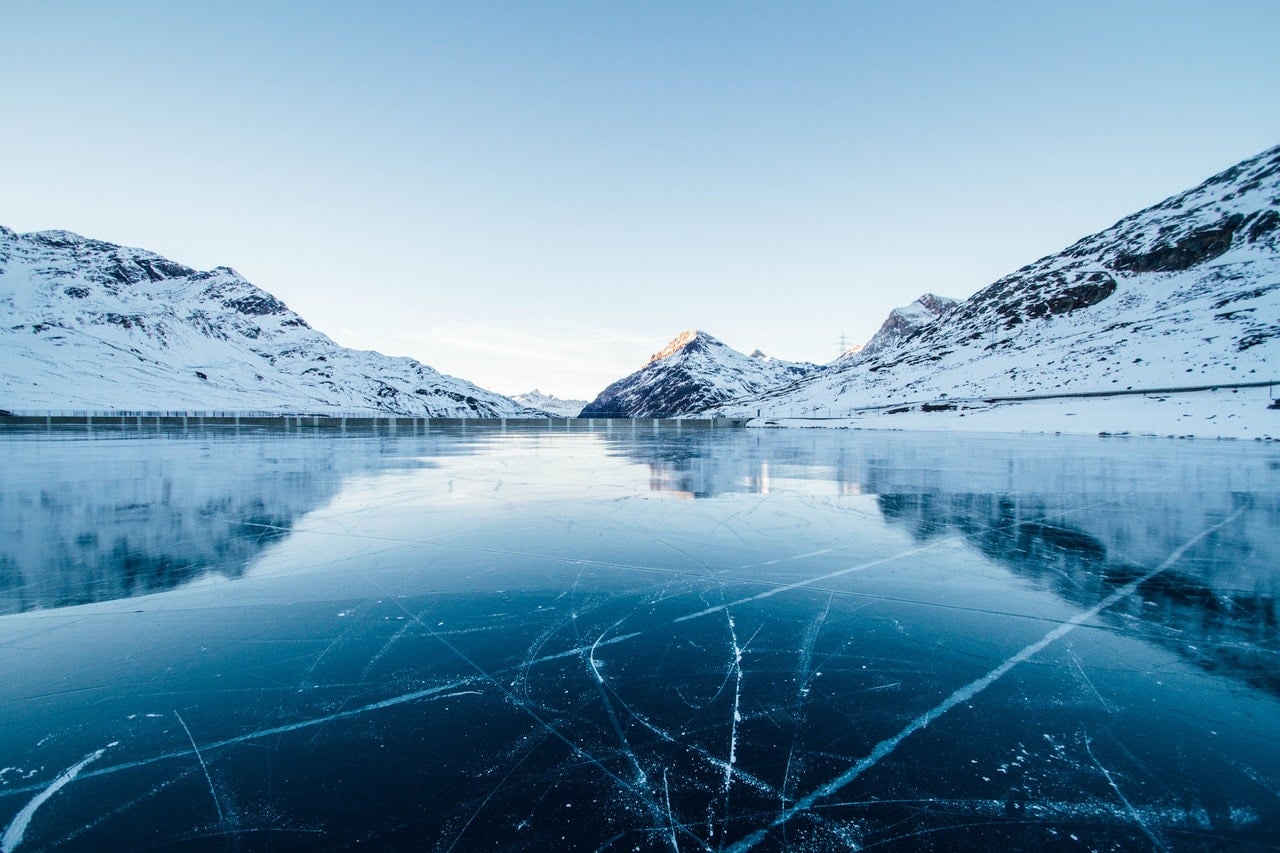Brahmatal is a hidden gem in Uttarakhand that offers you a trail to witness rhododendron-filled valleys and frozen and brown lakes, gifting you the best sunrise views. Brahmatal is an all-year trek that doubles its beauty during the winter season. The Brahmatal trek is a 6-day trek that takes you through the villages and forests of the Himalayas. The trek starts from Lohajung and takes you to Brahmatal Lake, which is situated at an altitude of 3,400 meters. The trek is known for its scenic views, snowy mountains, serene atmosphere, and unique experiences that help you appreciate life.
Visiting the Brahmatal trek in winter will make you understand why Lord Brahma chose Brahmatal as the spot for meditation, which itself answers the question of why you should do the Brahmatal trek in winter. The trek has gained popularity in recent years because of its expansive, snow-covered meadows and the sacred peaks into which the meadows open. However, because of these factors, the trek also draws a sizable number of hikers in the winter. Brahmatal is one of your options if you’re searching for a winter adventure.
15 Reasons to Visit Brahmatal Trek in Winter
Best Winter Trek
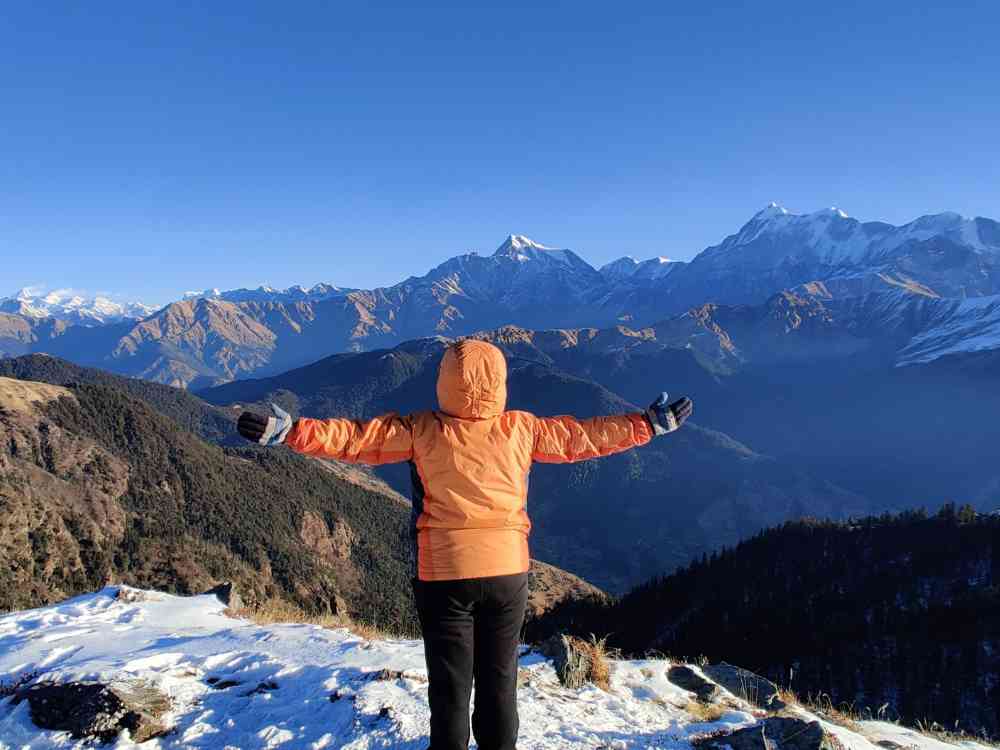
The best time to visit Brahmtal Trek is from October to March. During this period, temperatures can drop significantly, especially at higher altitudes, with lows reaching around -10°C (14°F) at night. However, daytime temperatures are generally milder, ranging from 5°C to 10°C (41°F to 50°F), making it an enjoyable time for trekking if adequately prepared.
From late December to February. This window offers the most stunning views of snow-covered landscapes and the chance to experience the serene beauty of winter. January is particularly appealing for those who want to witness the trek in its full winter glory, as the trails are often covered with a thick layer of snow. However, trekkers should be prepared for colder temperatures and potential snowfall, which can sometimes alter the trekking conditions.
You will also witness Bekaltal Lake, which is frozen, and Brahmatal Lake, which is frozen from October to March. The pathways on all trekking routes to Brahmatal are covered in snow. Snow covers the peak crown of Brahmatal. The snow-covered mountain of Brahmatal is easily accessible to trekkers.
Despite the cold, the winter months provide clear skies and excellent visibility, making it an ideal time for photography and sightseeing. The breathtaking vistas of the surrounding mountains, especially the Nanda Ghunti and Neelkanth peaks, are best enjoyed during this period. Thus, while the winter weather demands preparation and caution, it also rewards trekkers with unparalleled beauty and a memorable adventure.
| Season | Temperature | Highlight |
| Winter | -8°C to 5°C | The trek transforms into a winter wonderland with snow-covered landscapes. Brahmatal Lake is frozen, providing stunning views of the surrounding peaks. Ideal for snow lovers and beginner trekkers. |
| Spring | 0°C to 15°C | Rhododendrons bloom, adding vibrant colors to the trail. Clear skies enhance visibility of the majestic mountains. A great time for photography and enjoying mild weather. |
| Summer | 5°C to 20°C | Pleasant temperatures make trekking enjoyable. The lush greenery and blooming flora create a picturesque environment. However, it can be crowded due to peak trekking season. |
| Autumn | 0°C to 15°C | Crisp air and clear skies provide excellent trekking conditions. The landscape is often less crowded, allowing for a peaceful experience amidst stunning fall colors. |
Less Crowded Trails

One of the biggest advantages of doing the Brahmatal trek in winter is that the trails are less crowded. Unlike the summer months, when the trek is crowded with trekkers, winter offers a peaceful and serene experience. You can enjoy the scenic views and serene atmosphere without the crowds, making it a perfect experience for those who want to escape the hustle and bustle of city life. You can enjoy the scenic views and serene atmosphere without the crowds, making it a perfect experience for those who want to escape the hustle and bustle of city life.
The entire trail is covered with a thick layer of snow, making it a perfect winter wonderland for trekkers. The snow-covered landscape offers a unique and breathtaking view, with the snow-covered mountains and forests surrounding you. The snow-covered landscape is a perfect spot for photography, and the unique view offers a breathtaking experience.
READ MORE: Brahmatal Trek Itinerary
The Frozen Lake: A Breathtaking Sight
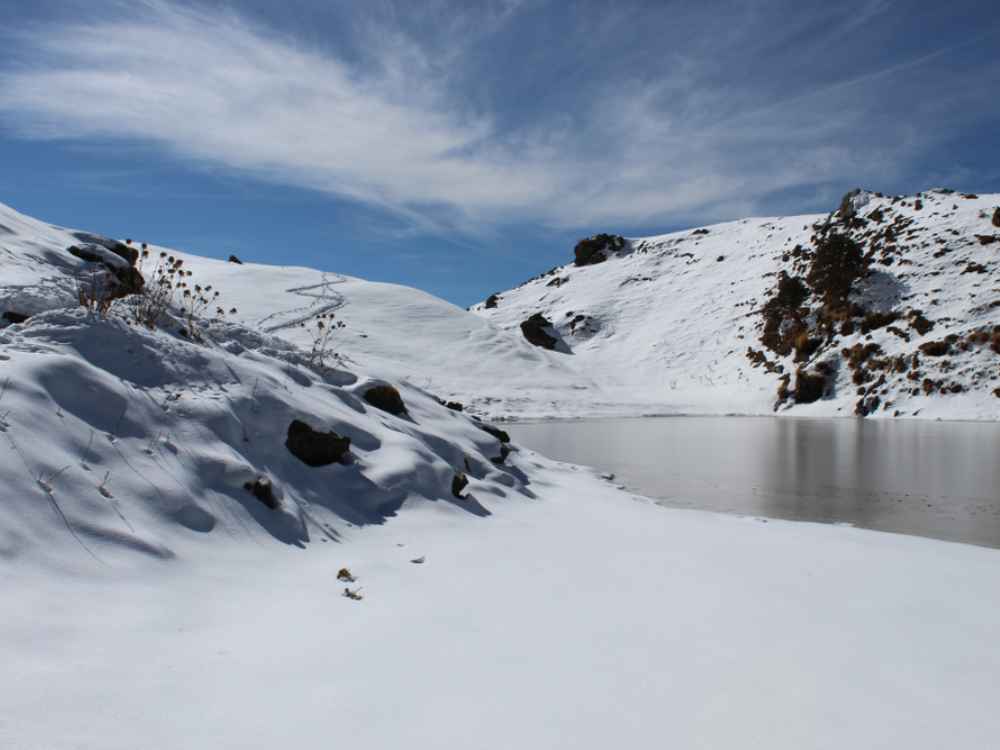
Even seeing two high-altitude lakes on a mountain trek is uncommon. Brahmatal Lake and Bekaltal Lake are two stunning alpine glacier-fed lakes that may be seen during the Brahmatal trek. The lakes freeze throughout the winter and are covered in a clear layer of frozen ice. Since walking on a frozen lake is one of the most exciting biblical experiences one can have, many people frequently do it. The Brahmatal lake is one of the most beautiful lakes in the Himalayas, and in winter, it is frozen. The frozen lake offers a breathtaking sight, with the snow-covered mountains surrounding it. The lake is a perfect spot for photography, and the frozen lake offers a unique and breathtaking view. 3. Snow-Covered Landscape: A Winter Wonderland
Mountain Views
The vistas of the enormous mountains that can be seen throughout the Brahmatal trek are only one of the many reasons we adore it. The Brahmatal walk begins in the Rhododendron trees, but after completing this ascent, you’ll be treated to a breathtaking vista of the trident-shaped wall of Mt. Trishul Massif (7,120 m/23,359 ft). Believe us when we say that the first glance will leave you speechless. As you ascend higher, the vistas will become even more expansive, and you will have the opportunity to observe Mt. Nanda Ghunti (6309 m/20,698 ft). You will also get a close-up look at Mt. Hathi Ghoda (6729 m/22,070 ft) and Mt. Neelkanth (6596 m/21,640 ft) as you arrive at Brahmatal Top.
Camping in Snow: A Unique Experience
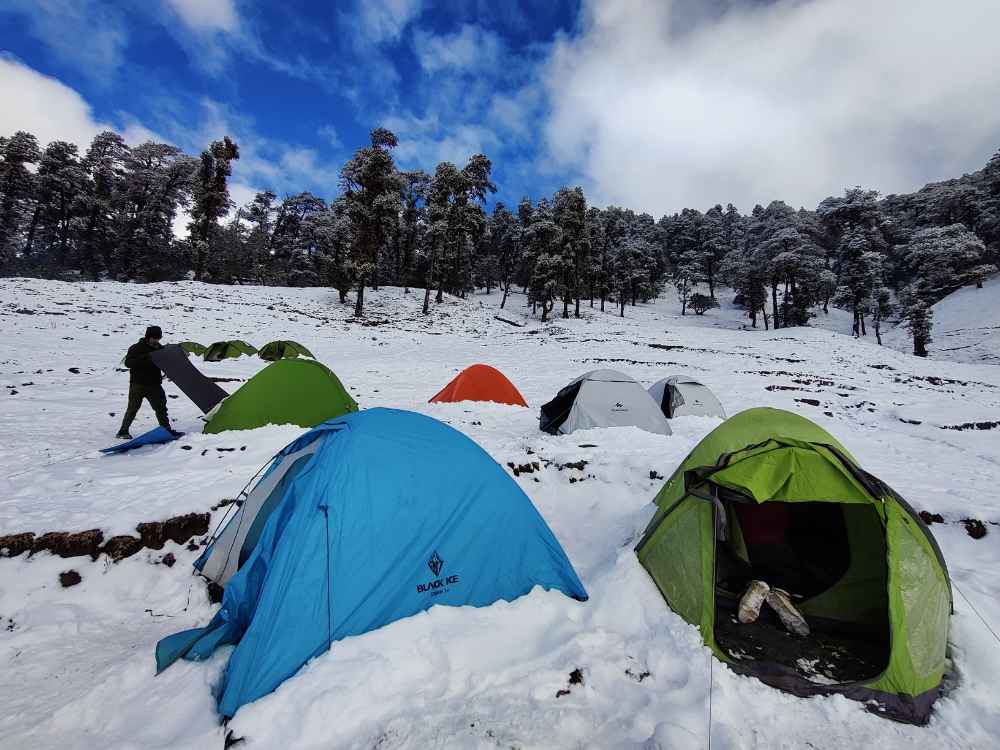
Camping in the snow-covered meadows of Brahmatal is an experience in itself. The sound of snow crunching underfoot and the warmth of the campfire offers a unique and cozy experience. The snow-covered meadows are a perfect spot for camping, and the unique experience offers a breathtaking view. In and of itself, the sight of colorful camps set up against the snowy backdrop is charming. You won’t want to miss the opportunity to bond with your friends while spending time together around a bonfire that is illuminated by stars.
Beginner Friendly Trek

The highest point on the Brahmatal trek, Brahmatal summit, is 3,733 meters (12,250 feet) above sea level. The entire Brahmatal trek is 30 km long and takes five days to finish. The Brahmatal trek has a moderate degree of difficulty. Altitude Mountain Sickness is less likely to occur here because the majority of the trail is through trees. Compared to Kedarkantha, the ascent is less steep due to the moderate gradient of this trek; nonetheless, the daily trek distance will be greater. You can anticipate trekking in knee-deep snow during the winter and occasionally seeing snowfall. There isn’t a technical ascent on this walk, although you might need microspikes. Even though this is a beginner’s Himalayan trek, it is always advised to be physically fit for high-altitude trekking.
Accomplishments of Summit Day
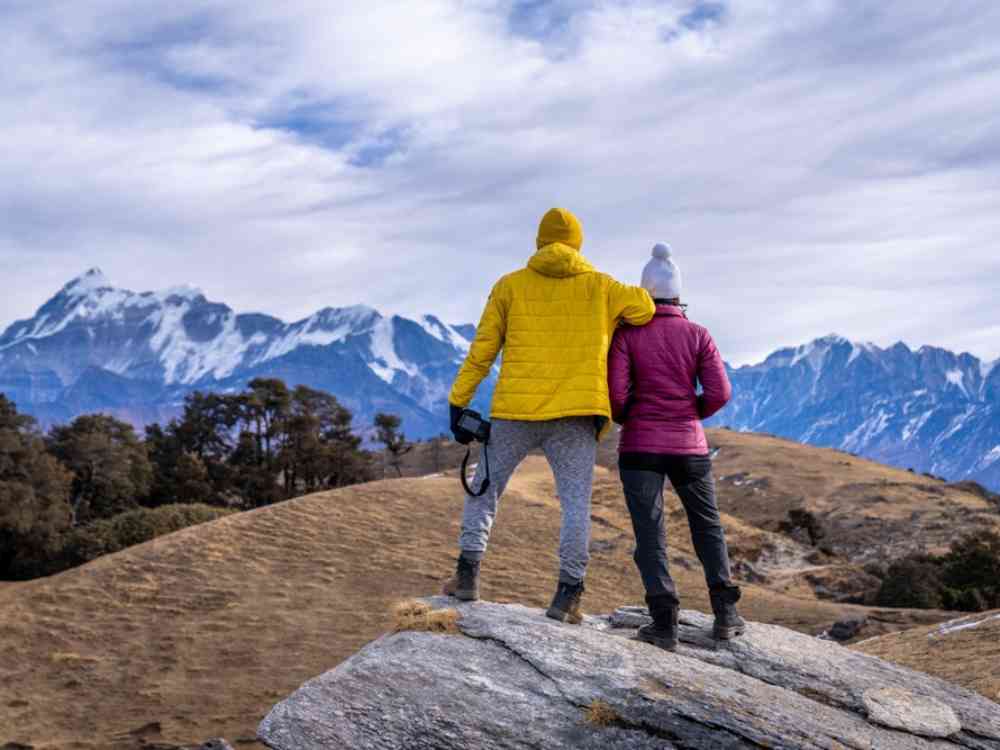
The summit of the Brahmatal Trek, known as Brahmatal Top, reaches an altitude of 12,250 feet (3,733 meters) and is a highlight of this breathtaking journey through the Himalayas. The ascent to the summit is characterized by a gradual climb that offers stunning panoramic views of the surrounding peaks, including Mt. Trishul and Mt. Nanda Ghunti. From this vantage point, trekkers are treated to a 360-degree vista of the majestic Himalayan range, making it a perfect spot for photography and reflection. The trek to Brahmatal Top typically begins early in the morning, allowing adventurers to experience the ethereal beauty of dawn breaking over the mountains.
Rhododendron Trail
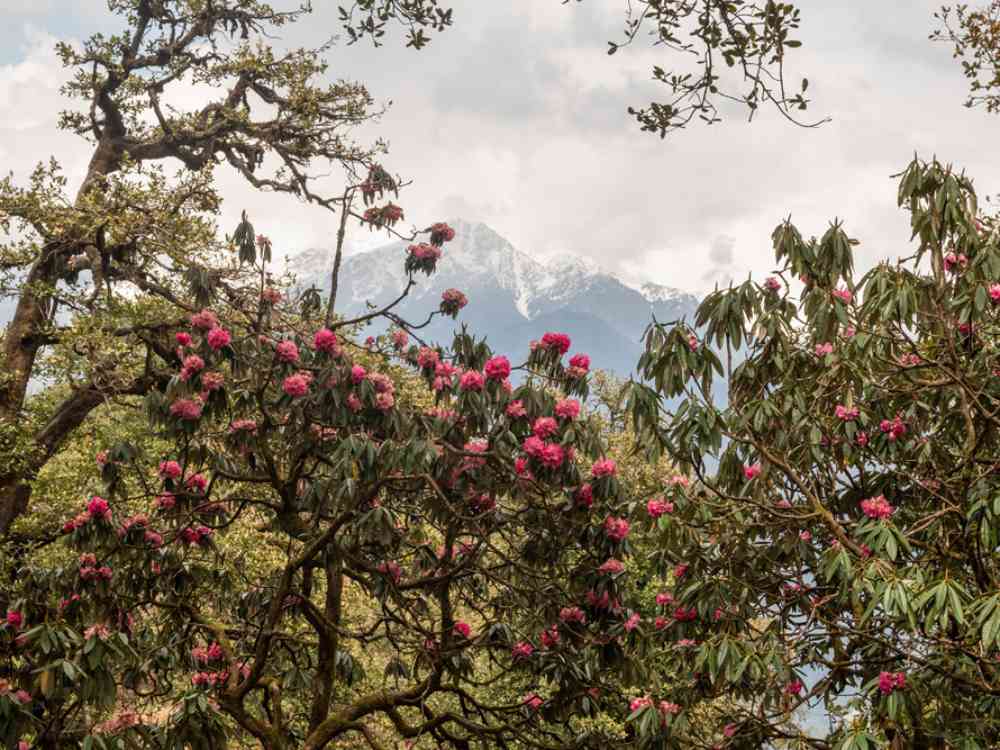
The Rhododendron Trail on the Brahmatal Trek is a stunning feature that draws nature enthusiasts and trekkers alike, making it a compelling reason to visit. As trekkers embark on their journey from the base camp at Lohajung, they are immediately enveloped in a vibrant landscape filled with Rhododendron trees, which bloom in shades of red, pink, and white. This enchanting trail meanders through dense forests, creating a picturesque canopy that filters sunlight and enhances the magical atmosphere of the trek. The sight of these magnificent blooms, particularly around Bekaltal Lake, transforms the hiking experience into a visual feast. The Rhododendron forests not only add aesthetic value but also provide a rich biodiversity that trekkers can appreciate.
Sense of Adventure
The Brahmatal Trek is a thrilling adventure that captivates trekkers with its diverse terrain and breathtaking vistas, making it a must-visit for adventure enthusiasts. Spanning approximately 24 kilometers over five days, the trek involves moderate difficulty, suitable for both beginners and experienced trekkers. The journey begins at Lohajung, where adventurers are greeted by dense forests of rhododendrons and oaks, gradually leading to the stunning Brahmatal Lake.
Mythological Significance
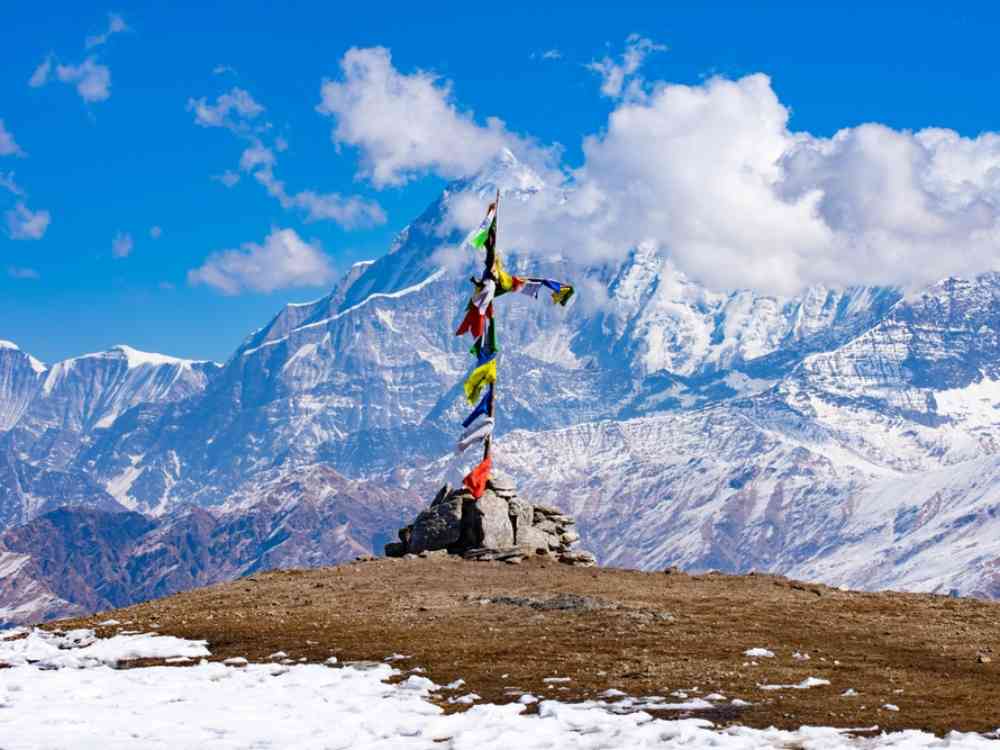
The Brahmatal Trek is steeped in rich mythological significance, primarily linked to Lord Brahma, the creator in Hindu mythology. According to legend, Brahmatal Lake is believed to be the site where Lord Brahma meditated deeply before embarking on the monumental task of creating the universe. This serene alpine lake is thought to have been formed by Brahma himself to provide a tranquil environment for his spiritual penance. The name “Brahmatal” literally translates to “Brahma’s Lake,” reflecting its sacred heritage. This connection to divine meditation adds a layer of spiritual allure to the trek, attracting not only adventure seekers but also pilgrims and spiritual enthusiasts who wish to experience the peaceful ambiance and seek blessings at this revered site.
Flora and Fauna
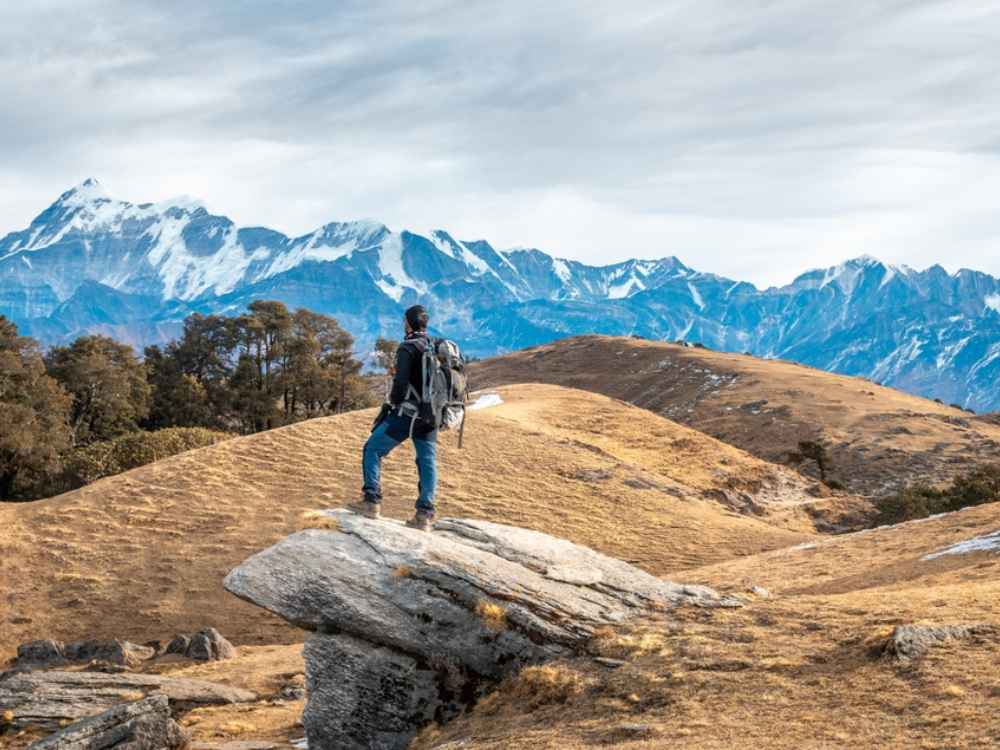
The Brahmatal Trek is a haven for flora and fauna, showcasing the rich biodiversity of the Garhwal Himalayas. The region is characterized by dense forests primarily composed of oak, rhododendron, and pine trees, which create a stunning visual tapestry, especially during the blooming season when rhododendrons burst into vibrant hues of red and pink. This lush vegetation supports a variety of flowering plants and medicinal herbs, enhancing the ecological richness of the area.
Wildlife enthusiasts will find the trek equally rewarding, as it is home to numerous bird species, including the colorful Himalayan Monal, Himalayan Griffon, and Koklass Pheasant. Trekkers may also encounter larger mammals such as Himalayan black bears, musk deer, and elusive leopards, although these animals are rarely seen due to their shy nature. Smaller mammals like the Himalayan Langur and barking deer can sometimes be spotted along the trails. The diverse ecosystems found in this region not only contribute to its natural beauty but also make it an ideal location for nature lovers and wildlife enthusiasts seeking to immerse themselves in the untouched wilderness of the Himalayas.
Forest Trail
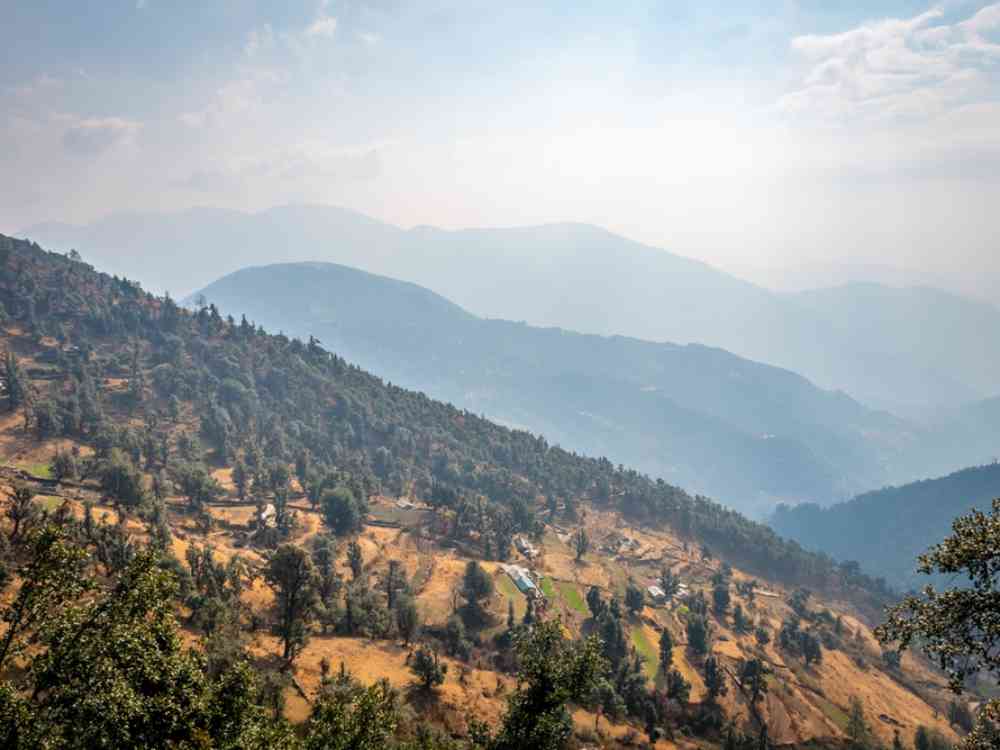
The forest trail of the Brahmatal Trek is one of its most enchanting features, offering trekkers a unique opportunity to immerse themselves in the lush biodiversity of the region. As the trek begins in Lohajung, adventurers are greeted by dense forests primarily composed of oak and rhododendron trees, which create a vibrant and picturesque environment. During spring, the trails come alive with the stunning blooms of rhododendrons, carpeting the ground in shades of red and pink, while in winter, the landscape transforms into a serene wonderland draped in snow.
FAQs
What is the difficulty level of the Brahmatal Trek?
The Brahmatal Trek is considered an easy to moderate trek, making it suitable for both beginners and experienced trekkers. The trail features gradual ascents and descents, with some challenging stretches, particularly in snowy conditions during winter14.
How long does the Brahmatal Trek take?
The trek typically spans 6 days, which includes travel to and from the base camp at Lohajung and approximately 4 days of actual trekking. This duration allows trekkers to acclimatize and enjoy the stunning landscapes along the way15.
What is the highest altitude reached during the trek?
The highest point on the Brahmatal Trek is around 12,250 feet (3,733 meters) at the Brahmatal summit. The trek begins at Lohajung, situated at approximately 7,600 feet (2,316 meters)14.
What is the best time to undertake the Brahmatal Trek?
The ideal seasons for trekking Brahmatal are winter (December to March) when the landscape is covered in snow, and spring (April to June) when rhododendrons bloom along the trails. Each season offers a unique trekking experience with varying temperatures and scenery.




